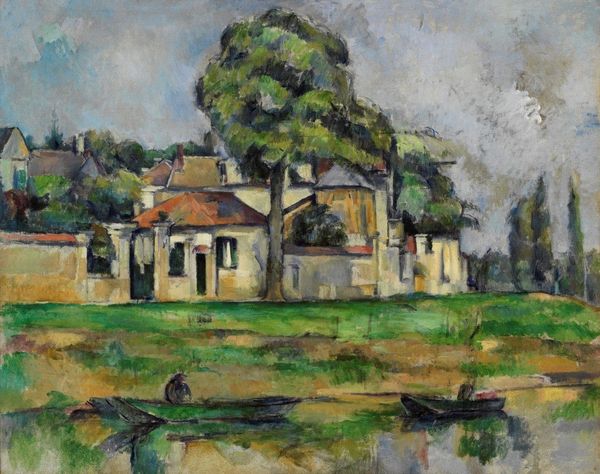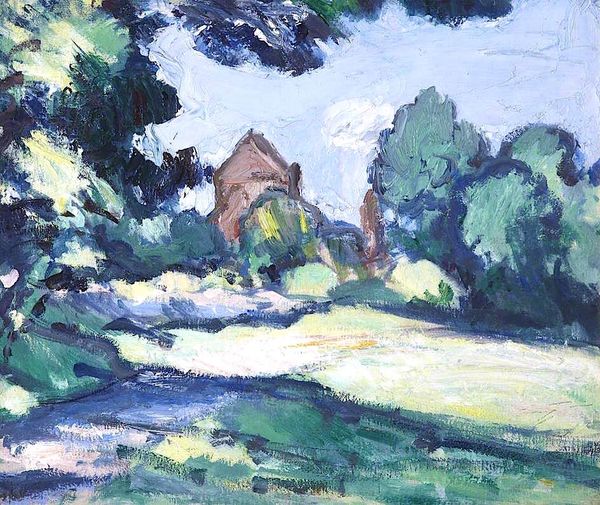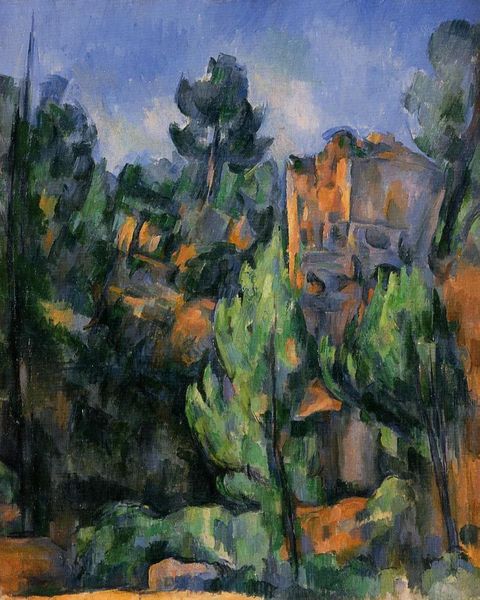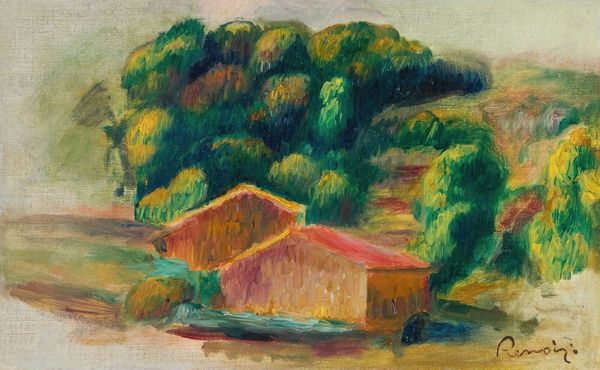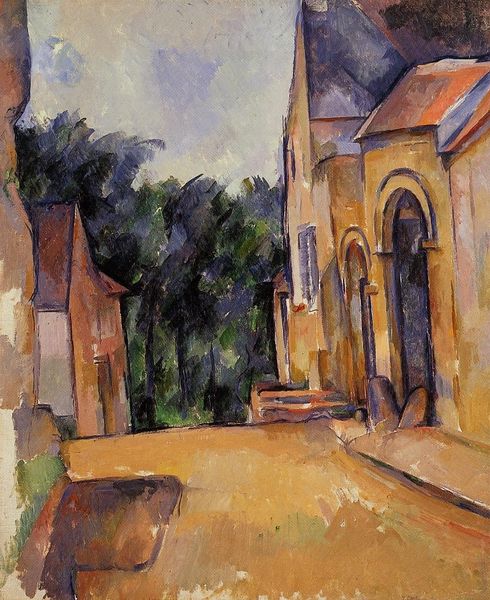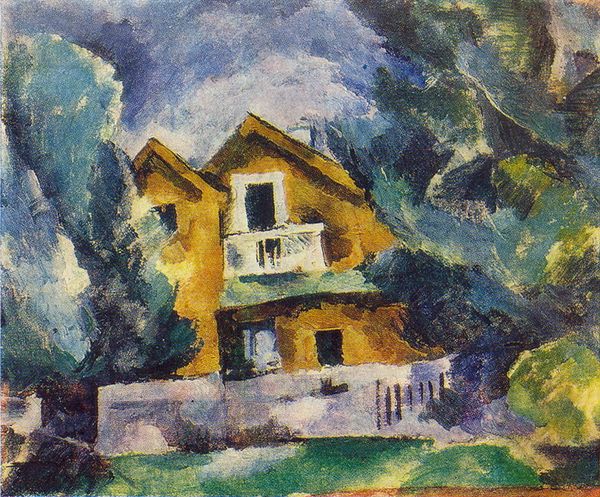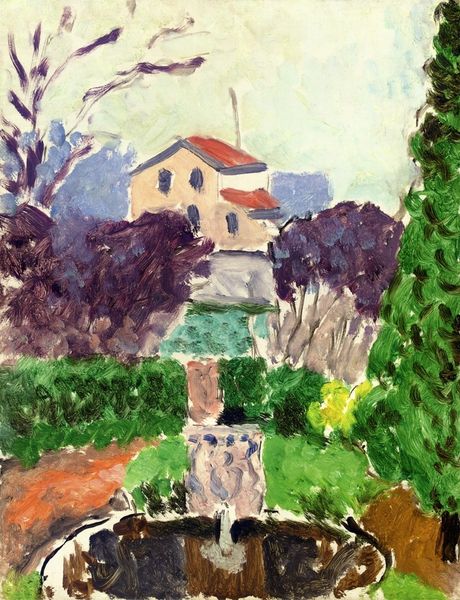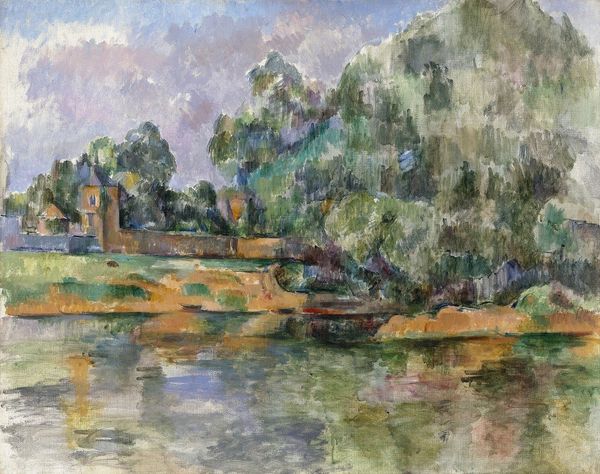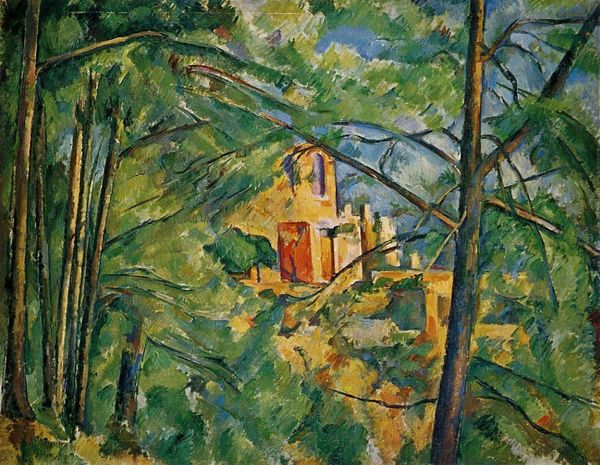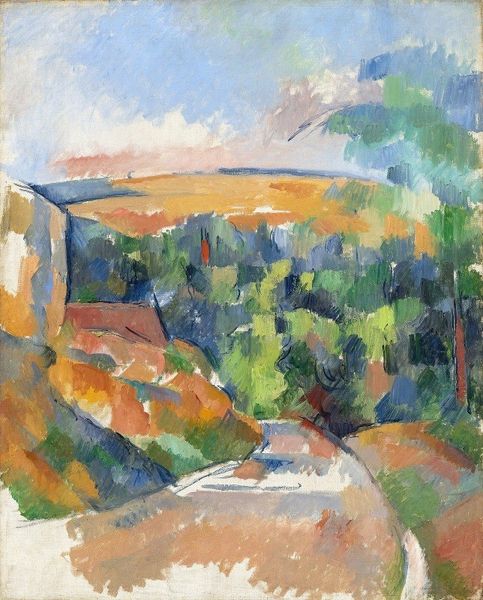
painting, oil-paint, impasto
#
painting
#
oil-paint
#
landscape
#
impressionist landscape
#
oil painting
#
impasto
#
post-impressionism
Copyright: Public Domain: Artvee
Curator: Gazing upon "Country House by a River", I’m immediately drawn into this scene. The tranquil river mirrors the architecture in the distance so beautifully. Editor: Absolutely, and for viewers just joining us, this painting, crafted with oil paint, invites a moment of peaceful observation. We see brushstrokes filled with light and movement, all while subtly hinting at the changing landscape of France. It whispers of a serene countryside escape. Curator: The water seems to ripple with whispered secrets. Notice the way the building emerges from the landscape, it’s solid yet seems to breathe with the same rhythm of the river. This blending… it softens what could have been just a study of form and line into something that resonates deep in your core. Editor: Indeed. You almost get the impression that Cezanne uses the home and water not merely to portray what he observed, but to present his own philosophy regarding nature and culture. How do humans make a place within nature? It seems to hint towards these broader societal issues of land use. Curator: That feels right. His impasto style is incredibly unique; I find myself thinking about him capturing an authentic sense of time, which is quite thought provoking! Editor: True. With those brushstrokes thick as memories, time somehow condenses. "Post-Impressionism" gives the artist a license to depart from strict replication, allowing expression to dominate the landscape and push past just mimicking reality. Curator: Yes. With the home, light, and landscape, it calls to mind the concept of home: safe, protected, alive. Don't you think that this place feels far more permanent, if not idyllic, for its quietude? Editor: Well, what appears as “quietude” is only how history remembers such settings; these “homes” come to reflect colonial systems that made such landscapes sites of unequal access and private exploitation of formerly shared spaces. As someone studying how art circulates amongst classes, I remain wary when these scenes suggest anything simplistic, such as safety. Curator: I see what you mean, the history, heavy as it can be, shapes our view, doesn't it? Editor: Precisely. I appreciate the nuance that we’re able to draw from a canvas, one that otherwise offers the impression of calm refuge. Curator: Likewise, thinking about those contradictions is part of being present with the painting. Editor: Indeed, art asks us more than it tells. Thank you for your wonderful insights, friend!
Comments
No comments
Be the first to comment and join the conversation on the ultimate creative platform.


